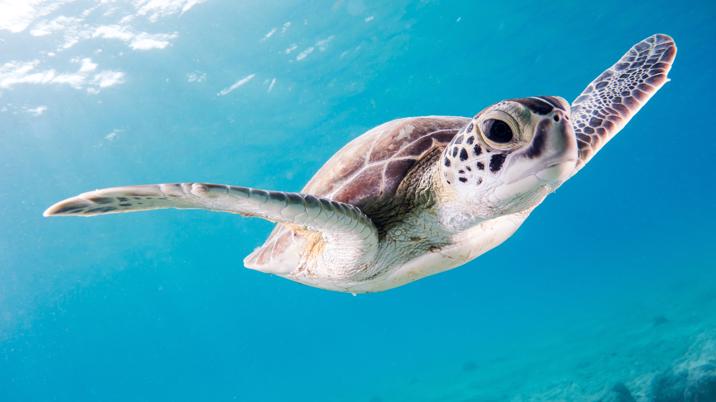
A bellyband wraparound promoting a competition for ideas to clean up plastics from the oceans was not the best thing to be arriving in a poly bag. Our readers of E&T spotted the irony, if not hypocrisy, of this contradiction and pointed it out in social media.
That was just over a year ago and a lot has changed since then. E&T, like most magazines, was mailed out in the ubiquitous ‘poly bag’ that’s been the industry standard for decades. But it’s steadily being consigned to the dustbin of history as readers want to receive their copy in a wrapper, they can be sure won’t end up wrapped around a turtle’s head.
This consumer pressure is good. But finding a solution has been less than straightforward. Environmental science and engineering are, in reality, much more complex than campaigners and identity politics would present them. Add marketing, politics and fashion to the mix and it becomes a minefield. The humble magazine wrapper is just one example.
As most of our wrappers go to readers’ homes, the easiest disposal route would be the mixed recyclables sack. Our poly bags were technically recyclable, but not in most kerbside collections. They had to go the same route as carrier bags, through collection points outside large supermarkets. That’s fine if you do a weekly supermarket shop in the car and you’re making the trip anyway. It’s not so good if you’re in a car-free household in the city that shops mainly online or at the local market. It would require a special trip out just to recycle a poly bag. So, you can’t blame them for putting them in a black sack.
Consumers also get confused and put things in the wrong bags. Councils all vary as to what can be recycled, largely because all their suppliers have different capabilities. But council targets are based on what they collect. If it’s recycled locally, then it takes extra resource to sort it out properly. If it’s shipped halfway around the world to be processed, which it long has been, then when it reaches the other end, it can be found to be literally rubbish. If it can’t be recycled, it’s likely to end up on a dump. Or in the sea.
So, E&T switched to a potato starch-based, biodegradable, compostable wrap last spring. You can’t print directly on that, so we had to print paper address sheets too; one reason it cost more than the cheap old poly bags, but we were pleased to respond to very reasonable reader concerns.
Biodegradable, bioplastic, compostable and recyclable all sound good, perhaps self-evidently so to many people, but the devil is in the detail. Starch-based bioplastics also contain petrochemical polymers which are not so environmentally friendly in production. They are biodegradable but how fast? The University of Plymouth tested a bunch of bags and found some of them still in good enough condition to hold shopping after years in the ground and months in the sea.
Environmental science and engineering are, in reality, much more complex than campaigners and identity politics would present them.
Compostable? By whom?
Compostable doesn’t necessarily mean they should go in the garden compost heap either. Most are compostable only in an industrial process. That would sound like they could go in household food waste bins but our own research found many councils’ processes pick them out of the waste stream. A Scientific American report pointed out that not only are biodegradable materials deliberately designed to dump carbon back into the environment and wrappers at sea will turn into choking little bits before they decompose entirely, but bags in oxygen-starved landfill could decompose to methane – even worse than carbon dioxide. On the other hand, in the UK, this methane may be captured to generate power. Yes, it really is very complex.
So, compostable, biodegradable bags are not perfect. Like poly bags, it all depends on how readers dispose of them and that in turn rests upon local recycling policies. “It concerns me that these novel materials also present challenges in recycling,” said one of the Plymouth researchers. But I concluded that, overall, the compostable wrapper was kinder than the poly bag.
Yet, when we had the chance this year to change again to an all paper wrap, we took it. It won’t work for all magazines but so far, it’s working for ours and magazines look smart wrapped in paper. There’s the added bonus too that it has a nice printable area for a full colour image, messaging about the wrapper, or extra advertising real estate.
It looks increasingly like paper wrap will become the industry standard. But it’s a technique for the future that’s curiously reminiscent of the past. I’m now looking forward to rolls of brown wrapping paper on shop counters. Brown paper packages tied up with string really are one of my favourite things.
What could be more natural than paper wrapped in paper? Some publishers are going ‘naked’. Just a sticker to hold the magazine closed, an address label stuck to the cover and it’s mailed just as it is. That takes us back a bit. What next? Boys on bicycles riding by, throwing bundles on our lawns and shouting ‘papers’?
It looks increasingly like paper wrap will become the industry standard.
This article was first published in InPublishing magazine. If you would like to be added to the free mailing list, please register here.












